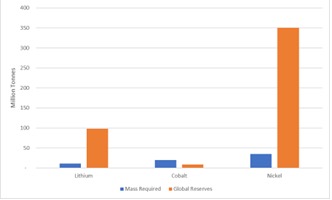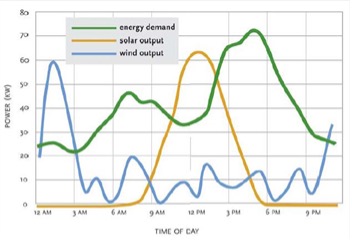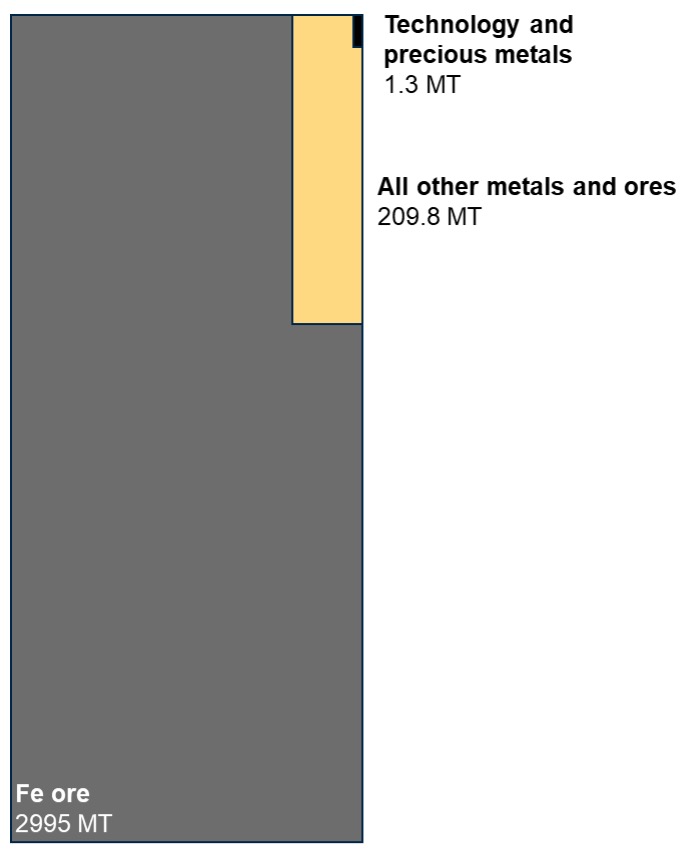Why We’re Not Even Close to Reaching Net-Zero ... and what we can do about it
Much of the world was represented at the UN Climate Change Conference (COP21) in Paris in 2015. A total of 196 Parties signed onto a commitment for emissions of carbon dioxide to be reduced by 45 percent by 2030, and reach net zero by 2050 to keep global warming to no more than 1.5°C. In the decade since, the big question is: “How are we doing?”
The short answer is: “Not good.” The longer answer is: “Not good, but there is cause for hope.”
To see why, let’s start with a look at the various solutions being offered, and how they’re constrained.
Three main transitions along the road to Net Zero
In this article, we consider the following three transitions to constitute the baseline architecture:
(1) Replace internal combustion engine vehicles with battery EVs
To find out what quantity of resources will be required to transition from fossil-fuel cars to EVs, we can start with a widely-accepted estimate by Simon Michaux in 2021, of the number of vehicles in the global fleet – about 1.4 vehicles.
A typical EV battery has about 8 kilograms of lithium, 14 kilograms of cobalt, and 20 kilograms of manganese, although this can vary depending on the battery size; the nickel content of EV batteries averages 25.3 kg.
Replacing the global vehicle fleet will require 626 million tonnes of batteries. This is an extraordinary quantity, and raises the question of whether there are even adequate global reserves (much less production) to satisfy such a demand. Comparing the metal requirements to 2023 global reserves, we find lithium and nickel requirements are about 10 percent of global reserves; cobalt demand, however, is more than twice the global reserves.
Without a big change in battery technology to require fewer critical minerals, a global transition to EVs just isn’t possible.

Figure 1: Technology Metals Required for Global EV Fleet
(2) Replace fossil fuels with renewable power generation and storage
The demand for battery-making materials isn’t just confined to EVs. The second transition needed along the road to Net Zero requires replacing fossil fuel electrical generation with renewable-power generation. And, given that the two main renewable sources – solar and wind – produce power at times that do not necessarily coincide with when that power is needed (see Figure 2), utility-scale power storage is required.

Figure 2 : Typical power demand curve with renewable power output (from A. Edrisian et al., The New Hybrid Model of Compressed Air for Stable Production of Wind Farms, November 2013)
Batteries are the most common form of storage, but as we’ve seen with EV batteries, utility-scale battery power storage will be hard to achieve. Figure 3, from the British Geological Survey in 2019, shows that the global production of iron ore of 2,995 metric tons (gray) dwarfs production of all other metals and ores (yellow, 210 MT) which, in turn, points to the small production of technology and precious metals (black, 1.3 MT).

Figure 3 2019 global production of primary metals (from Simon Michaux, 2021)
Technology metals are produced at a rate three orders of magnitude lower than the production of iron. It is simply not possible to construct a large-scale infrastructure that depends on such scarce resources.
Other forms of power storage, such as molten salt and flywheels, may help store power so that it is available when needed. The problem with all power storage systems lies in building them to scale so that they meet the needs of power utilities.
Hydrogen is often cited as both a fuel and power-storage mechanism that bypasses some of the materials constraints of batteries. To determine how environmentally advantageous that hydrogen is, we must know how it is produced, with colors ascribed to each process. The cleanest is “green” hydrogen, produced when water is split into its constituent hydrogen and oxygen molecules, using renewable energy.
However, most hydrogen is produced from natural gas – this supply is “gray” hydrogen, in which the hydrogen is isolated and the remaining carbon dioxide vented to the atmosphere, which adds to the world CO2 burden. “Blue” hydrogen is produced the same way, only with the resulting carbon dioxide sequestered to keep it out of the atmosphere.
But again, the problem is scaling to the point where it can make a real difference. One of the biggest constraints on blue hydrogen is not a material constraint (as for renewables and batteries), but a manpower and capital constraint. The sheer quantity of hydrogen production facilities, pipelines to carry hydrogen from producers to off-takers, pipelines to carry the carbon dioxide to locations with suitable geology, and the injection wells for permanent storage of CO2, is beyond our capacity to construct in any reasonable timeframe — and certainly not by 2050.
(3) Replace fossil fuel pipelines with electrical power transmission
If we are to move away from fossil fuels towards electrification, there must be a change in how we transport energy long distances, away from pipelines and towards electrical wires. There are several challenges to this approach. For example, the capital and operating cost of moving energy is higher for electrical transmission than for pipelines. There are also limitations in resources such as copper and other materials needed to construct the transmission system, and equipment and crews required to build the infrastructure. In addition, grid stability decreases with the addition of renewable power, and full electrification creates a single point-of-failure with no backup energy sources in the event of grid failure.
Signs of hope
Energy is the master resource. Without it, no useful work can be done. Transitioning the entire global energy supply chain is an immense undertaking, quite possibly the biggest challenge the world has ever faced. Fortunately, the resources being thrown at the problem are also immense; governments, private funders and international organizations are offering support for a wide range of technologies.
And results are coming in – the news media carry stories of more efficient solar power arrays, better means of power storage, and power generation through non-carbon means such as atomic fusion.
Many of these devices will fall by the wayside as unworkable. But there is great hope that, out of the vast range of technology for clean power generation, storage, and transmission, enough will become workable and effective at moving to a Net Zero Carbon world.
 Frank Frey is a Principal in GHD and a Professional Engineer in Texas, Louisiana, and Oklahoma. He has over 30 years’ experience in refining and petrochemical facilities, as well as mid-stream and upstream projects. He has a strong background in underground storage facilities, solution mining, and pump/compressor stations. Frank is currently supporting GHD’s Future Energy Program to develop projects in hydrogen production, transmission, and storage; ammonia production, storage and export; and carbon capture.
Frank Frey is a Principal in GHD and a Professional Engineer in Texas, Louisiana, and Oklahoma. He has over 30 years’ experience in refining and petrochemical facilities, as well as mid-stream and upstream projects. He has a strong background in underground storage facilities, solution mining, and pump/compressor stations. Frank is currently supporting GHD’s Future Energy Program to develop projects in hydrogen production, transmission, and storage; ammonia production, storage and export; and carbon capture.
GHD | www.ghd.com
Author: Frank Frey, PE







